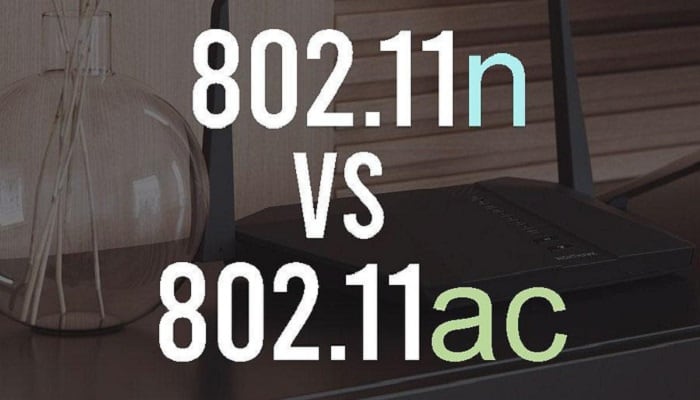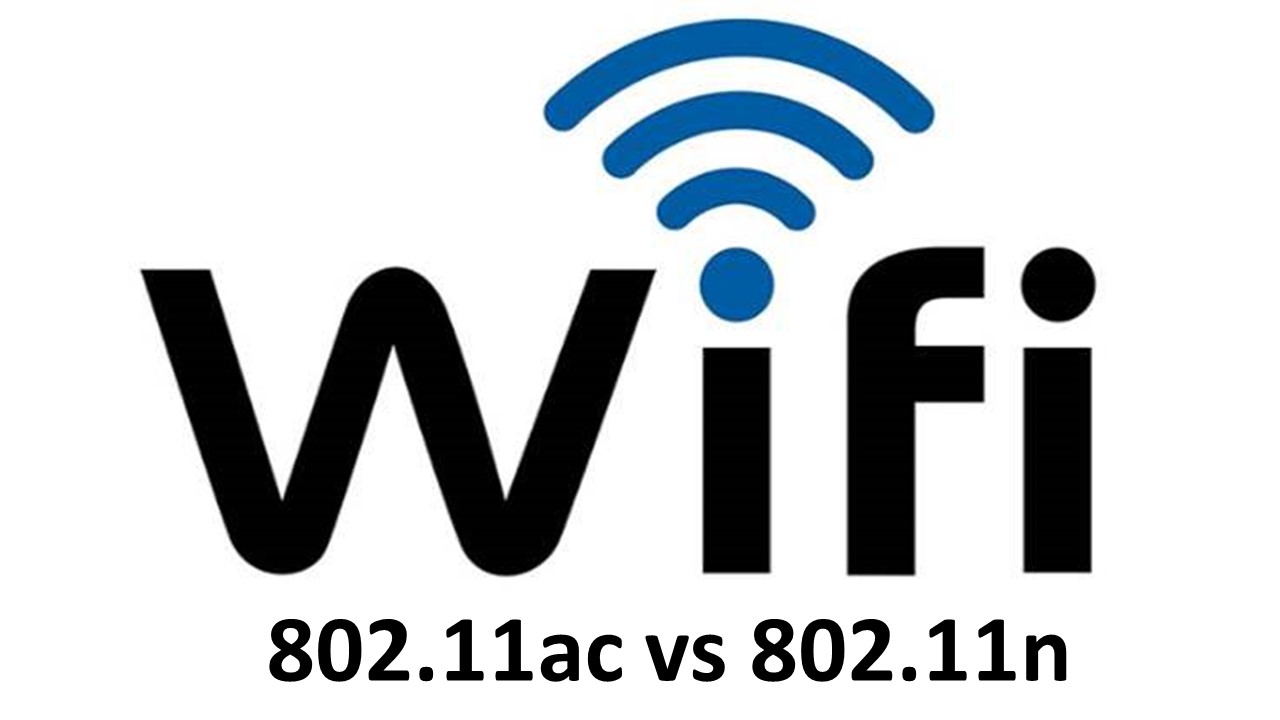What are the differences between 802.11ac vs 802.11n Wi Fi? The IEEE or Institute of Electrical and Electronics Engineers have designated 802.11 as a common standard for different wireless local area networks or WLAN.
There are different variations of 802.11 standards such as a, b, g, n, ac, and a few are in the pipeline. These suffixes attached with 802.11 indicate different versions of the Wi-Fi standard.
Each of these versions comes with different features and functionality as mentioned here. Depending on its features and capabilities, the standards will result in an increase in the performance level of the networking devices.
In This Article
KEY TAKEAWAYS
- The 802.11ac standard is much better than the 802.11n standard in terms of compatibility.
- The superior technology of the 802.11ac than the 802.11n standard makes it relatively much faster.
- The 802.11ac standard can support double the number of antennas than the 802.11n standard and offers a much better and wider range.
- The 802.11ac standard operates quietly and supports beamforming and is therefore more efficient in carrying the signals.
The 16 Differences Between 802.11ac vs 802.11n Wi Fi

1. Compatibility
The Wi-Fi Alliance certified 802.11ac standard is far better than the 802.11n standard. This is actually a large-scale roll-out and is typically found in routers, tablets, laptops, TV sets and smartphones.
On the other hand, the compatibility of the 802.11n is much more limited and will work fine mostly with the modern routers.
2. Speed
The speed of the 802.11ac is much better than the 802.11n standard. This is because the 802.11ac comes with far better technology than the 802.11n version. The speed of the 802.11ac standard is 1.3 gigabits per second. This renders to 166 or 1331 megabytes per second.
Alternatively, the 802.11n standard can operate only at 450 Mbit per second or 0.45 Gbps. However, note that its speed is the highest in the high-performing 802.11n compatible routers.
3. Antenna Support
The wireless 802.11n can support up to four antennas maximum, each operating at 100 Mbit approximately.
The 802.11ac, on the other hand, can support a maximum of eight antennas, all of which will operate at more than 400 Mbit, which is four times the n-standard.
4. The Range
The range of the 802.11ac is better than the 802.11n version. This standard comes with a 5 GHz spectrum.
However, in comparison, a modern router that can broadcast in 5 GHz and 2.4 GHz in 802.11n standard will be very rarely available.
5. Quieter and Faster
The 802.11ac will ensure a faster and quieter transmission of data, as compared to the 802.11n standard. This is due to the 5 GHz spectrum that will also ensure much lower interference from the nearby wi-fi.
6. Beamforming
The core aspect of the specification of the 802.11ac is beamforming. This is the process of detecting the device to send the signals and intensify it in that specific direction instead of sending it in all possible directions equally.
The performance of 802.11n is not better and cannot work at long range.
7. Power Savings
802.11ac is much more efficient in carrying the signals to the dedicated device. This will result in more power savings.
In comparison, the 802.11n will be less efficient and are ideal for the mobile devices only. The power saving is not as much as 802.11ac either.
8. Usage
The usage of 802.11ac is much more varied and extensive. It can work in larger and multi-user settings.
The 802.11n will work best in small flats and in homes where there is no network related storage.
9. Frequency Band
The latest 802.11ac standard uses a frequency band of 5.8 GHz. This is far less congested which means that there will be no interference or noise. It will have an improved range as well.
On the other hand, the older 802.11n standard typically uses a frequency band of 2.4 GHz. This is highly overused and therefore, there may be interference from other devices on the same spectrum.
10. Bandwidth Support
Considering the 80 MHz channel, the 802.11n has double width and supports 4 X 40 MHz bandwidth.
In comparison, the 802.11ac will support 8 X 160 Mhz.
11. Modulation and Spectral Efficiency
The 802.11ac provides higher and better modulation with higher bandwidth. This allows transmitting 256 different signals by shifting the phase of each signal over similar frequency.
If you look at the 802.11n standard, the low bandwidth results in lower spectral efficiency. This is 4 times lower than 802.11ac.
12. Functions
The 256 QAM of 802.11ac increases the output by 33% and the Multi-User MIMO features makes it work like a switch.
On the contrary, the 802.11n has a lower throughput and performs like a hub.
13. MIMO
When you consider the 802.11ac standard, it uses an 8×8 MIMO. This means that it will have 8 spatial streams.
However, the 802.11n version typically uses a 2×2 MIMO and a few have 4×4 MIMO and will have 2 or 4 spatial streams. That is to say, in all aspects, this is half as good as the 802.11ac standard, in performance.
14. Multi-station Output
The features and technologies of 802.11ac ensures a more consistent and efficient multiple-station output.
It can handle four downlink users at the same time at a minimum speed of 1 Gigabits per second. It saves both power as well as cost of transmission of signals sending them through a singular output of 500 Megabits per second, at the least.
The 802.11n will not be able to provide multi-station output and the other benefits associated with it.
15. Application
802.11ac is the best choice if you want to stream media on LAN because it provides much larger output than 802.11n standard. However, this is only available when the device and APs of the network is 802.11ac.
In comparison, when you use an 802.11n wireless adapter, you will get the optimal performance when you connect it to an 802.11n device that is working in the 802.11n mode.
16. Distance and Speed
The speed of the 802.11ac standard is 90 Mbps at 1 meter, 70 Mbps at 10 meters and 50 Mbps at 20 meters behind two solid walls.
The speed and distance ratio of the 802.11n considering the same parameters are, 30 Mbps, 20 Mbps and 5 to 10 Mbps.
Which is Better – 802.11ac or 802.11n Wi Fi?

To select between the two, you must first know that the Wireless N or 802.11n is the improved version of 802.11g but, the 802.11ac is the enhanced version of 802.11n.
Knowing the pros and cons is the best way to determine the better among the two networking standards.
This standard was developed in the late 1990s. The suffixes can be a bit confusing, which are:
- The 802.11b standard which is the first generation
- 802.11a is the second
- 802.11g is considered as the third generation and
- 802.11n is the fourth standard in the family.
The 802.11ac is the latest and is considered as the fifth generation of this wi-fi networking standard.
Therefore, you can see that there is no specific relation in the letters used as a suffix with the different generation of the 802.11 standard.
This standard typically defines the PHY or physical layer as well as the Media Access Control or MAC layer within the network.
The MAC layer remains the same for all versions of the standard but the PHY varies.
This is to accommodate the latest wireless technology in the newer versions which will ensure more link reliability and greater data transfer speed.
As of now the most commonly used standard is the 802.11n. You will find it being used in:
- Routers
- Hotspots
- Laptops
- Tablets
- Smartphones and
- Different Wi-Fi access points and mobile devices.
The 802.11n standard is backwards compatible with the older versions like the 802.11a and 802.11g devices.
The present 802.11n standard is actually an improvement of the 802.11a and 802.11g standards. The characteristic features of the 802.11n standard are:
- It augments 40-MHz channels
- It comes with 64 QAM or Quadrature Amplitude Modulation
- It uses MIMO or Multiple Input and Multiple Output technology and
- It uses OFDM or Orthogonal Frequency Division Multiplex feature.
These features allow a data transfer rate as high as 600 Mbps. The 4×4 version of this 802.11n standard will support up to four receivers and four transmit channels. However, there are also 1×2, 2×2, and 3×3 versions available and used extensively.
There are few other reasons for the popularity of the 802.11n standard. This includes:
- Its capability to carry video signals,
- Wireless connectivity in TV and DVD players,
- Ability to transmit full HD signals through compressed video formats such as MPEG4 and H.264, and
- Its reliability and ability to perform at a higher level of MIMO.
On the other hand, the 802.11ac is considered to be the next generation of the wi-fi standard.
This is actually an upgrade of the 802.11n version.
This version comes with a more reliable technology that ensures faster transmission of data from the source to the output channels.
This standard functions as a 5 GHz ISM radio band. This ensures maximum bandwidth and minimum interference of the data signals. The standard also uses:
- MIMO
- OFDM and
- 80 to 160 MHz wide channels, apart from the 40 MHz channel.
The key changes made in its architecture boosts the data rate up to 3 GB/s, though it will depend on different factors like:
- The channel bandwidth
- Modulation and
- The MIMO configuration.
The number of OFDM subcarriers increases with the increase in bandwidth.
This can be as many as 512 for a 160 MHz bandwidth. It helps in adding 256-phase QAM. This also helps in increasing the data rate further.
The larger number of MIMO versions in 802.11ac standard comes with an 8×8 configuration, MU MIMO, and multi-user version.
The standard is also compatible with the earlier 802.11a or 802.11n standard. The unique ability of beamforming helps in establishing a better link reliability and an extension of its range.
The merits of 802.11n include best signal range, fastest optimal speed, more resilience and minimum interference to its signal from the other devices in the network or any outside sources.
As for its downsides, it is more expensive than its predecessor 802.11g and the structure does not support multiple signals due to the risk of interference by the nearby 802.11b or 802.11g devices in the network.
The advantages of 802.11ac, on the other hand, includes utilization of dual-band wireless technology.
This supports multiple connections. It comes with backward compatibility to both 802.11g and 802.11n standards.
It can also work on both 2.4 GHz and 5 GHz wi-fi bands. The bandwidth is as high as 1300 Mbps on 5 GHz band and 450 Mbps on 2.4 GHz.
The demerits of it, however, is the cost and the high chance of interference with the 2.4 GHz frequency.
Now that you know the ins and outs of the new standards of network connectivity, it will help you further if you know the actual difference between 802.11ac and 802.11n versions
Ideally, this knowledge will help you to choose the best standard, which entirely depends on your needs.
However, if you are still confused about choosing the better one amongst these two standards, you should call an expert for their advice.
Conclusion
The latest 802.11ac standard is better in specific circumstances such as need for larger bandwidth and range.
On the other hand, the 802.11n standard is also good enough but there are a few limitations that may influence your choice.
Consider your requirements and setting to pick the right one for you.